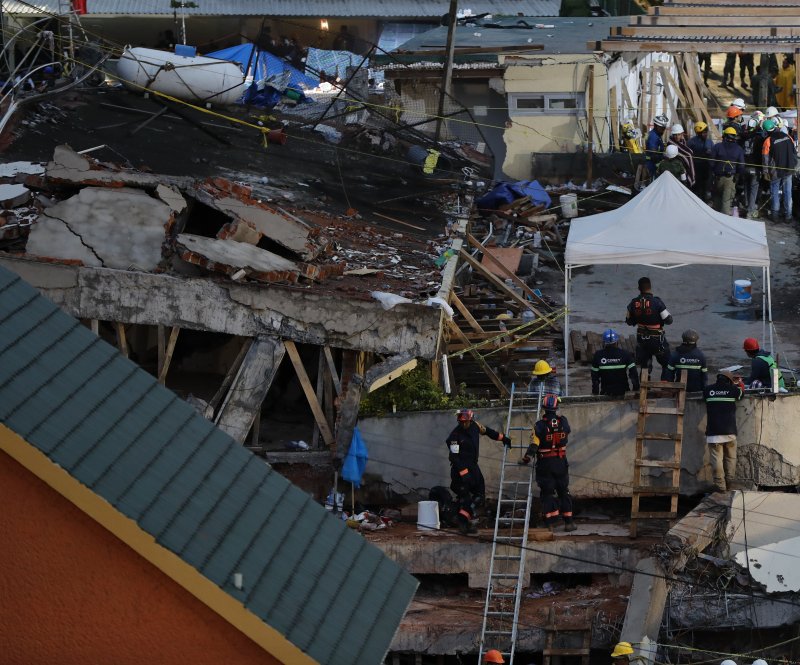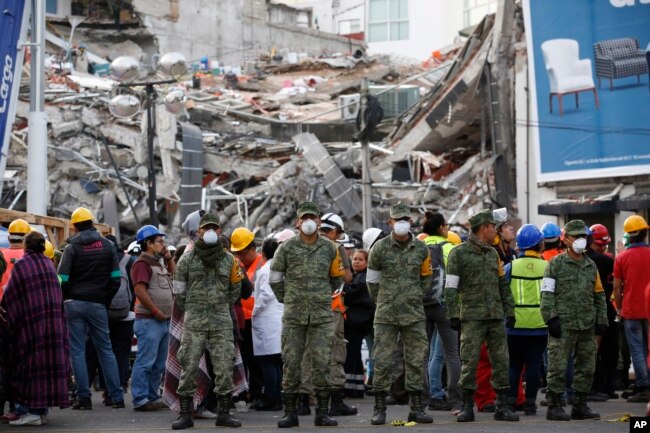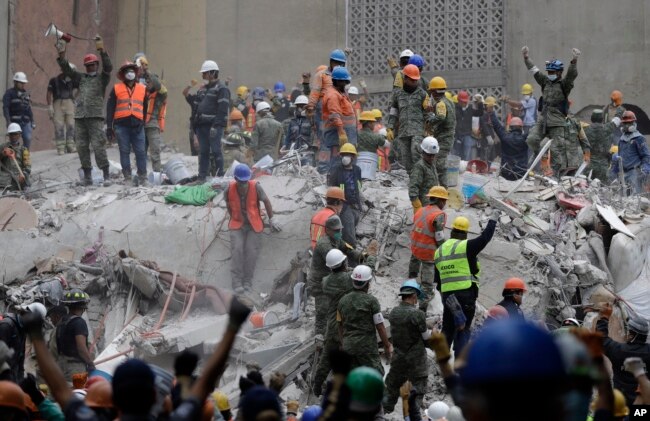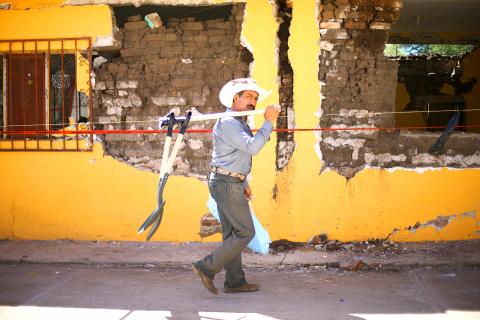Can we afford to with the damage of two hurricanes?...

Will the U.S. help after Mexico's most powerful earthquake in a century?
September 8, 2017 • In the short time between the immense flooding in Texas wrought by Hurricane Harvey and the destruction to come in Florida wrought by Hurricane Irma, one of the most powerful earthquakes in Mexico's history rocked the country.

Will the U.S. help after Mexico's most powerful earthquake in a century?
September 8, 2017 • In the short time between the immense flooding in Texas wrought by Hurricane Harvey and the destruction to come in Florida wrought by Hurricane Irma, one of the most powerful earthquakes in Mexico's history rocked the country.
Mexico City, more than 600 miles away, shook amid the tremors. The death toll has surpassed 30 and continues to climb as Mexico, too, prepares for a hurricane — Katia, Category 2, expected to slam into Mexico's east coast on Saturday. The Mexican government will stretch itself as it tries to ensure the safety of its citizens, and it's perhaps worth wondering whether its neighboring government to the north will lend a hand. The United States, as noted earlier, is handling the aftermath of one unprecedented disaster (Harvey) while trying to ready itself for yet another potentially unprecedented disaster (Irma). It, too, will stretch itself ying to ensure the safety of its citizens.
But in the wake of Harvey's catastrophic flooding, the Mexican government offered its assistance to Texas even while President Donald Trump again insisted Mexico would pay for his wall along the border between the two countries. On Aug. 27, the Mexican Secretary of Foreign Relations office released a statement rebuking Trump, but concluded by offering help to anyone in the U.S. reeling from Harvey: "The Government of Mexico takes this opportunity to express its full solidarity with the people and government of the United States for the damages caused by Hurricane Harvey in Texas, and reports that we have offered the US government all the help and cooperation that can be provided by the different Mexican government agencies to deal with the impacts of this natural disaster, as must good neighbors in times of difficulty."

The Mexican government, in contact with the State Department and the government of Texas, reportedly offered to help residents affected by Harvey in the same way the nation's government helped victims of Hurricane Katrina, which rocked Louisiana and other states in 2005. Texas Governor Greg Abbott accepted the offer. Following Katrina, Mexican soldiers found themselves on U.S. soil for the first time in more than 150 years. They stayed for three weeks in Louisiana and Mississippi, according to The Washington Post, where they delivered about 184,000 tons of supplies, and around 170,000 meals.
A State Department spokesperson wrote in an email that Mexico hasn't requested aid following the earthquake, but that the U.S. government is "in close contact with Mexican authorities as we monitor the situation." "In addition to Mexico, we are monitoring the situation in Guatemala and El Salvador closely regarding earthquake and tsunami-related impacts," the spokesperson wrote. Trump has so far not publicly spoken about potential aid to Mexico, and, yes, that means no tweets, either. President of Mexico Enrique Peña Nieto, however, tweeted his thanks to friendly nations and leaders for their solidarity and support. Maybe that tweet is genuine. Maybe it's a subtweet. Maybe both.
Will the U.S. help after Mexico's most powerful earthquake in a century?











